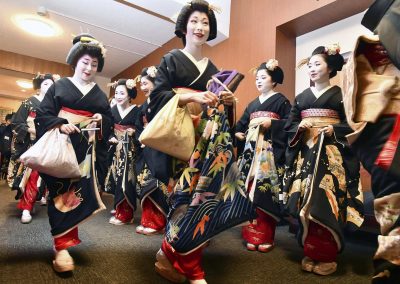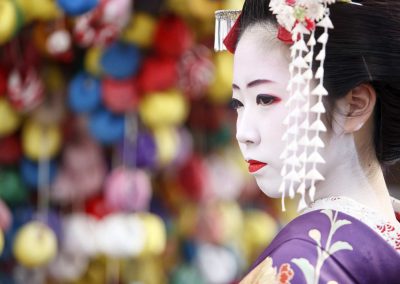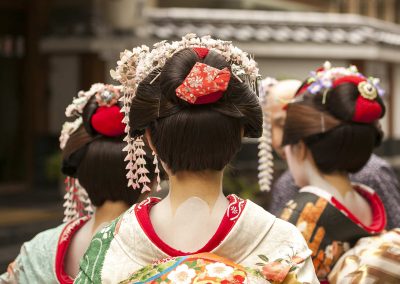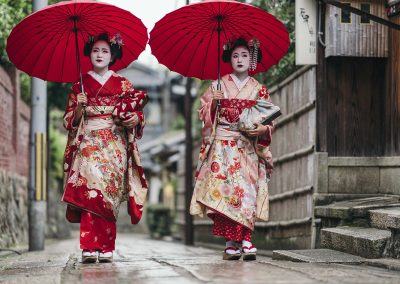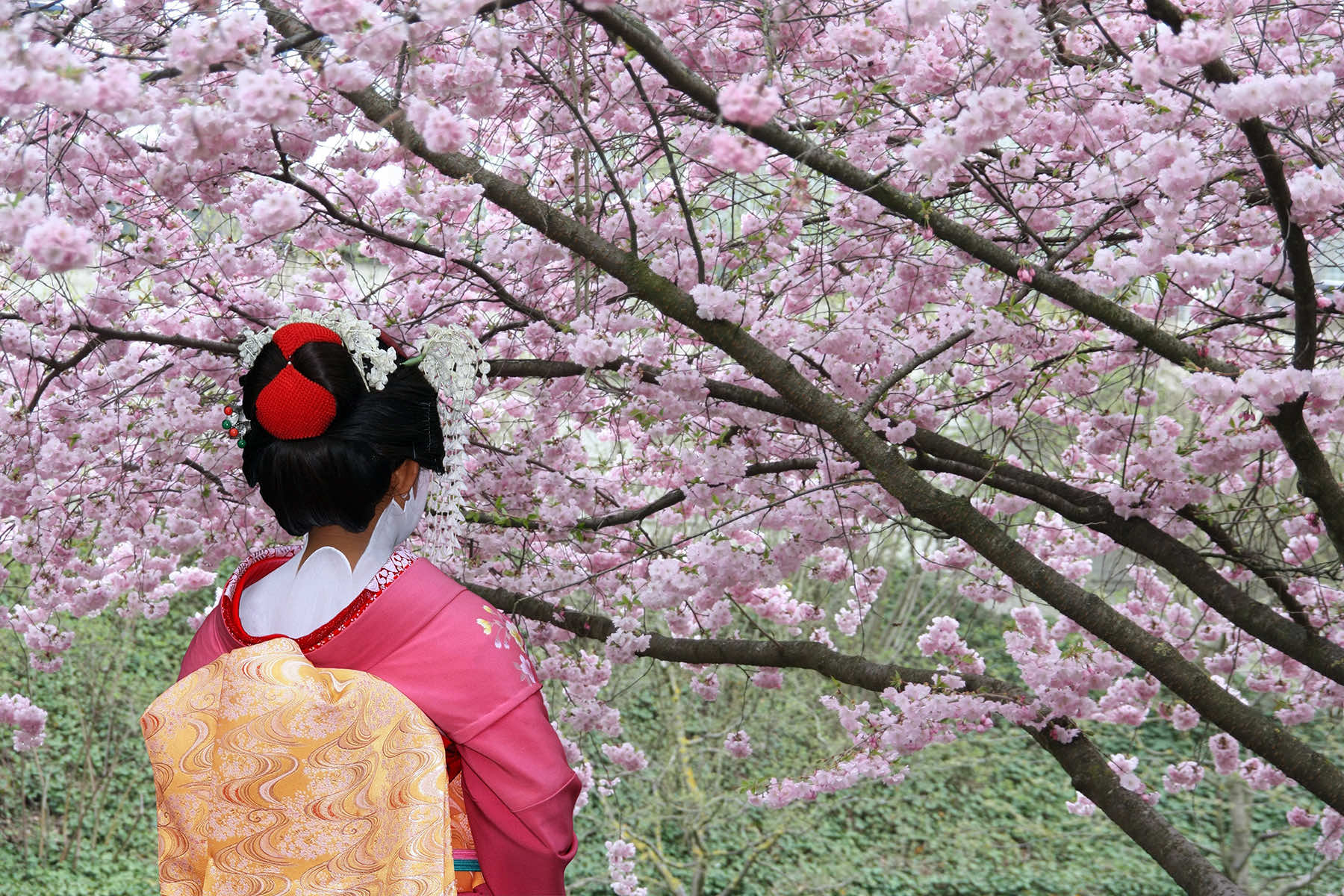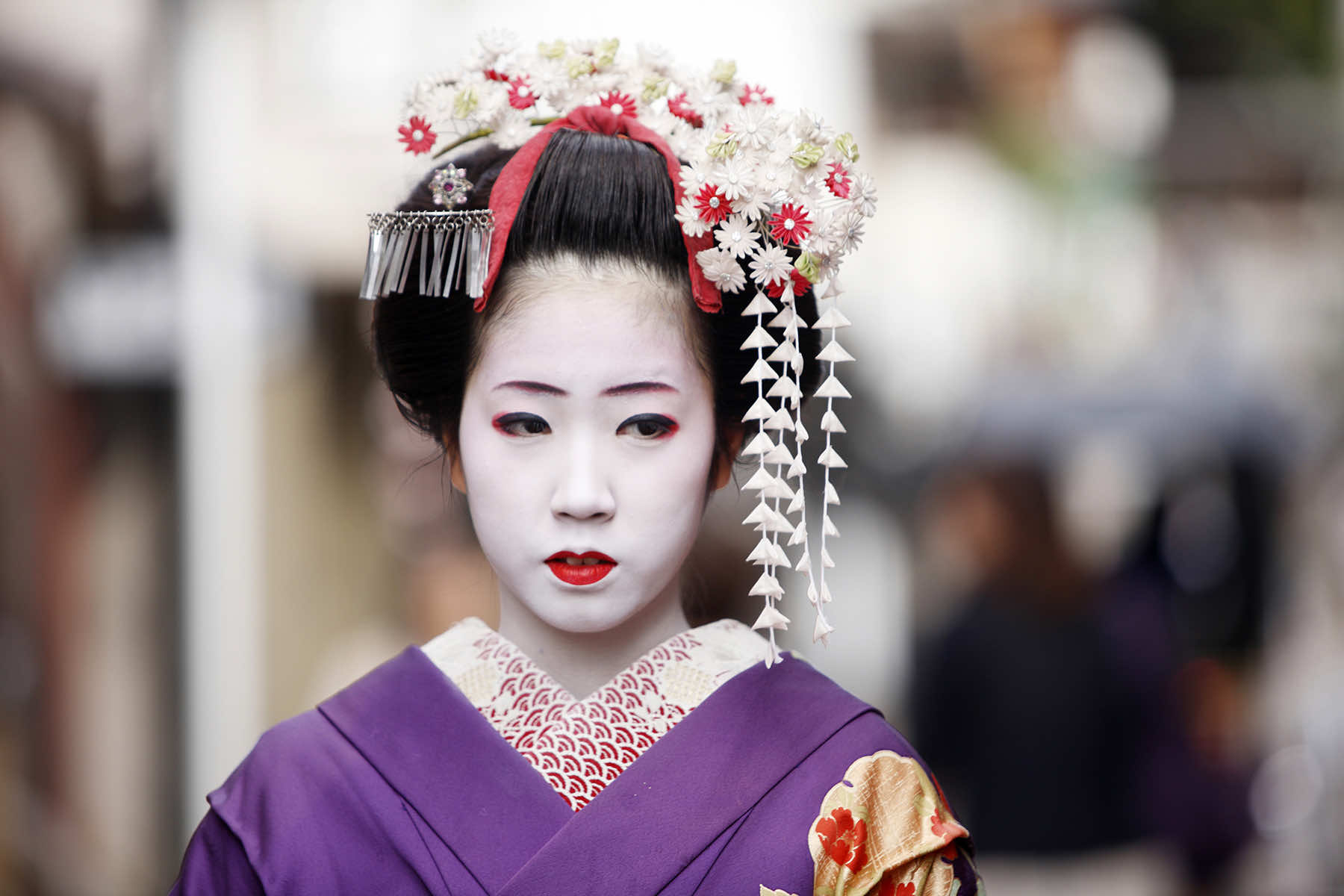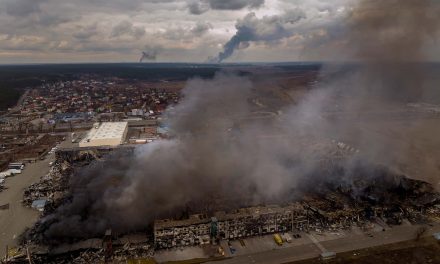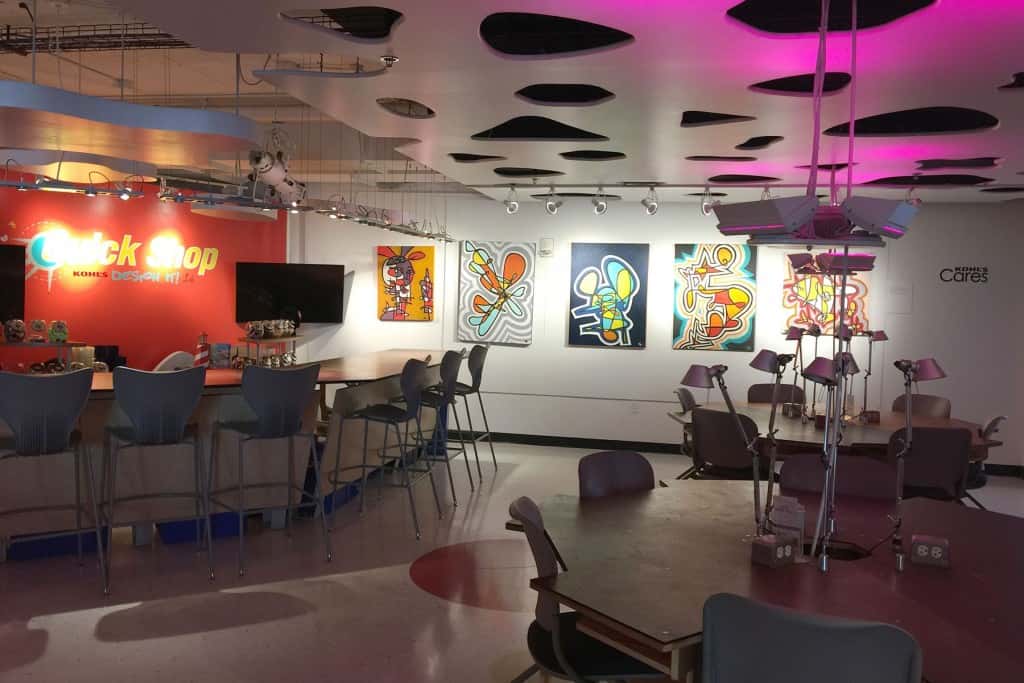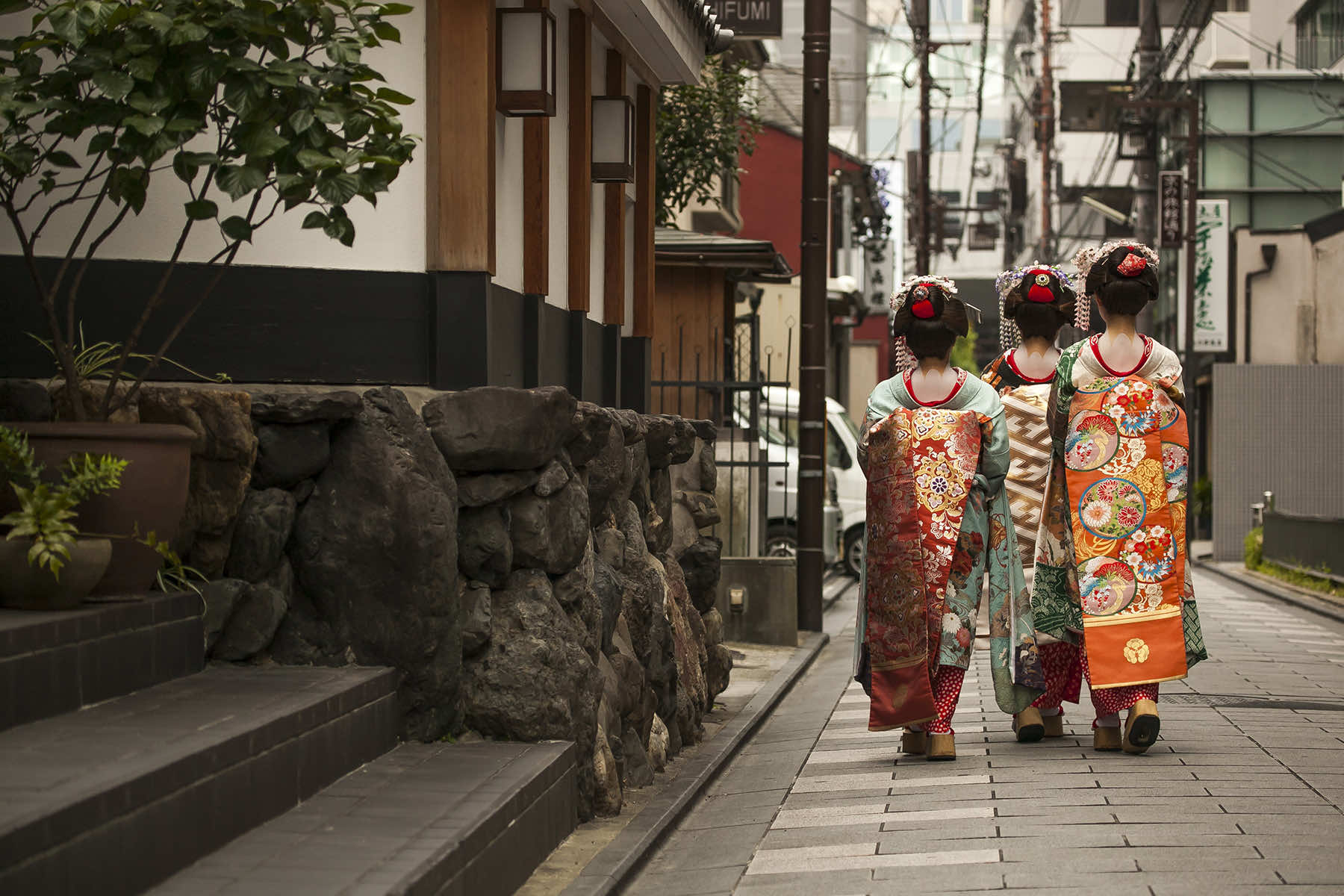
Japan’s ancient capital of Kyoto, long a popular destination for tourists, has closed off some private-property alleys in its famous geisha district because of complaints about misbehaving visitors.
Swarms of tourists have increasingly crowded the narrow, quaint streets of the area called Gion, often following tour guides who show people around and lecture for long hours.
“We have placed public signs in the area that tell tourists to stay out of our private streets,” said Isokazu Ota, a local district official.
The signs say in both Japanese and English: “This is a private road, so you are not allowed to drive through it. There will be a fine of 10,000 yen.”
The keep-out warning is aimed mainly at pedestrians, not cars, as the Japanese language wording refers to generically “passing through.” Under recent currency conversion rates the fine would be about $70.
The ban covers just several blocks of Gion. The district’s public streets will remain open to tourists, so the area and the rest of Kyoto will still be teeming with visitors, both from Japan and around the world.
Complaints about over-zealous tourists began bubbling years ago, though the discontent cooled when the coronavirus pandemic brought a lull in tourism. Now, visitors are back in a frenzy.
Gion’s outrage highlights brewing resentment at what many people feel is “over-tourism,” even though the Japanese economy depends more than ever on tourism revenue to sustain growth.
The district of winding alleyways is known for picturesque teahouses, where geisha and their maiko apprentices, wearing fancy kimono and hair ornaments, perform in dance and music.
In a city known for gorgeous temples and gardens, Gion is one of its most scenic and historical spots. Tourists, armed with cameras, like to wander around Gion, hoping to catch the women on their way to dance class or a fancy dinner party.
Overseas tourist traffic to Japan is rebounding to pre-pandemic levels. More than 22 million visitors came to Japan last year, eager to take in sushi, electronic gadgetry and the splendors of nature like Mount Fuji and the beaches of Okinawa.
In 2019, incoming travel totaled more than 31 million people, and this year’s number could approach or even overtake that.
For many residents of Gion, the flood of disorderly visitors has been too much. Their local council summarized the public sentiments a few months ago by proclaiming:
“Kyoto is not a theme park.”
3.11 Exploring Fukushima
- Journey to Japan: A photojournalist’s diary from the ruins of Tōhoku 13 years later
- Timeline of Tragedy: A look back at the long struggle since Fukushima's 2011 triple disaster
- New Year's Aftershock: Memories of Fukushima fuels concern for recovery in Noto Peninsula
- Lessons for future generations: Memorial Museum in Futaba marks 13 years since 3.11 Disaster
- In Silence and Solidarity: Japan Remembers the thousands lost to earthquake and tsunami in 2011
- Fukushima's Legacy: Condition of melted nuclear reactors still unclear 13 years after disaster
- Seafood Safety: Profits surge as Japanese consumers rally behind Fukushima's fishing industry
- Radioactive Waste: IAEA confirms water discharge from ruined nuclear plant meets safety standards
- Technical Hurdles for TEPCO: Critics question 2051 deadline for decommissioning Fukushima
- In the shadow of silence: Exploring Fukushima's abandoned lands that remain frozen in time
- Spiral Staircase of Life: Tōhoku museums preserve echoes of March 11 for future generations
- Retracing Our Steps: A review of the project that documented nuclear refugees returning home
- Noriko Abe: Continuing a family legacy of hospitality to guide Minamisanriku's recovery
- Voices of Kataribe: Storytellers share personal accounts of earthquake and tsunami in Tōhoku
- Moai of Minamisanriku: How a bond with Chile forged a learning hub for disaster preparedness
- Focus on the Future: Futaba Project aims to rebuild dreams and repopulate its community
- Junko Yagi: Pioneering a grassroots revival of local businesses in rural Onagawa
- Diving into darkness: The story of Yasuo Takamatsu's search for his missing wife
- Solace and Sake: Chūson-ji Temple and Sekinoichi Shuzo share centuries of tradition in Iwate
- Heartbeat of Miyagi: Community center offers space to engage with Sendai's unyielding spirit
- Unseen Scars: Survivors in Tōhoku reflect on more than a decade of trauma, recovery, and hope
- Running into history: The day Milwaukee Independent stumbled upon a marathon in Tokyo
- Roman Kashpur: Ukrainian war hero conquers Tokyo Marathon 2024 with prosthetic leg
- From Rails to Roads: BRT offers flexible transit solutions for disaster-struck communities
- From Snow to Sakura: Japan’s cherry blossom season feels economic impact of climate change
- Potholes on the Manga Road: Ishinomaki and Kamakura navigate the challenges of anime tourism
- The Ako Incident: Honoring the 47 Ronin’s legendary samurai loyalty at Sengakuji Temple
- "Shōgun" Reimagined: Ambitious TV series updates epic historical drama about feudal Japan
- Enchanting Hollywood: Japanese cinema celebrates Oscar wins by Hayao Miyazaki and Godzilla
- Toxic Tourists: Geisha District in Kyoto cracks down on over-zealous visitors with new rules
- Medieval Healing: "The Tale of Genji" offers insight into mysteries of Japanese medicine
- Aesthetic of Wabi-Sabi: Finding beauty and harmony in the unfinished and imperfect
- Riken Yamamoto: Japanese architect wins Pritzker Prize for community-centric designs
Yuri Kageyama and MI Staff (Japan)
Kyodo News (via AP) and Tiff Graphic, Yue Stock, KPG Payless, Juri Pozzi (via Shutterstock)
3.11 Exploring Fukushima: The Tōhoku region of Japan experienced one of the worst natural disasters ever recorded when a powerful earthquake was followed by a massive tsunami, and triggered an unprecedented nuclear crisis in 2011. With a personal connection to the tragedies, Milwaukee Independent returned for the first time in 13 years to attend events commemorating the March 11 anniversary. The purpose of the journalism project included interviews with survivors about their challenges over the past decade, reviews of rebuilt cities that had been washed away by the ocean, and visits to newly opened areas that had been left barren by radiation. This special editorial series offers a detailed look at a situation that will continue to have a daily global impact for generations. mkeind.com/exploringfukushima

